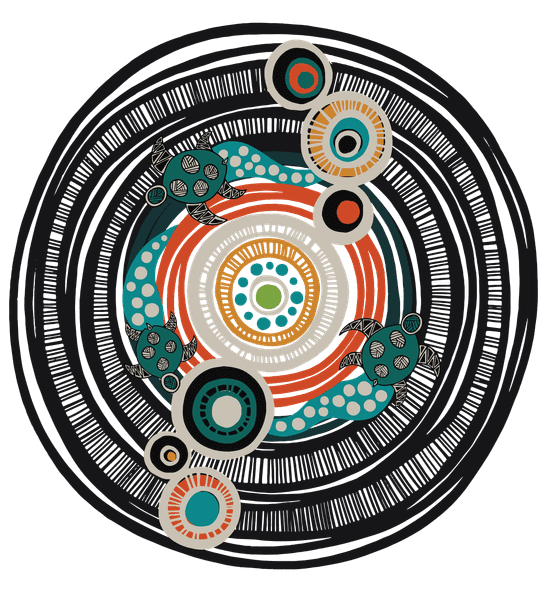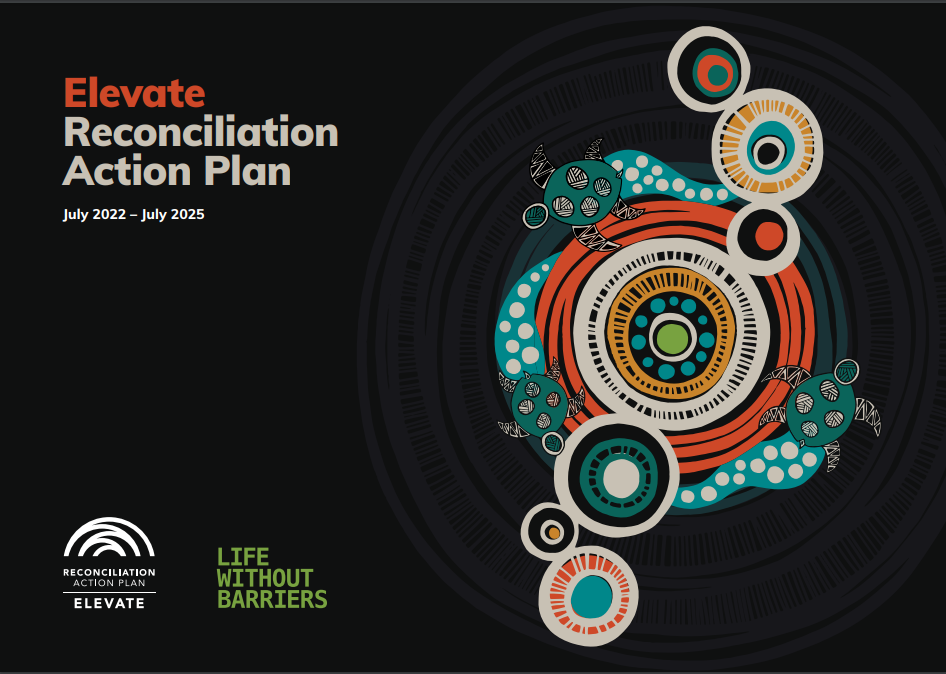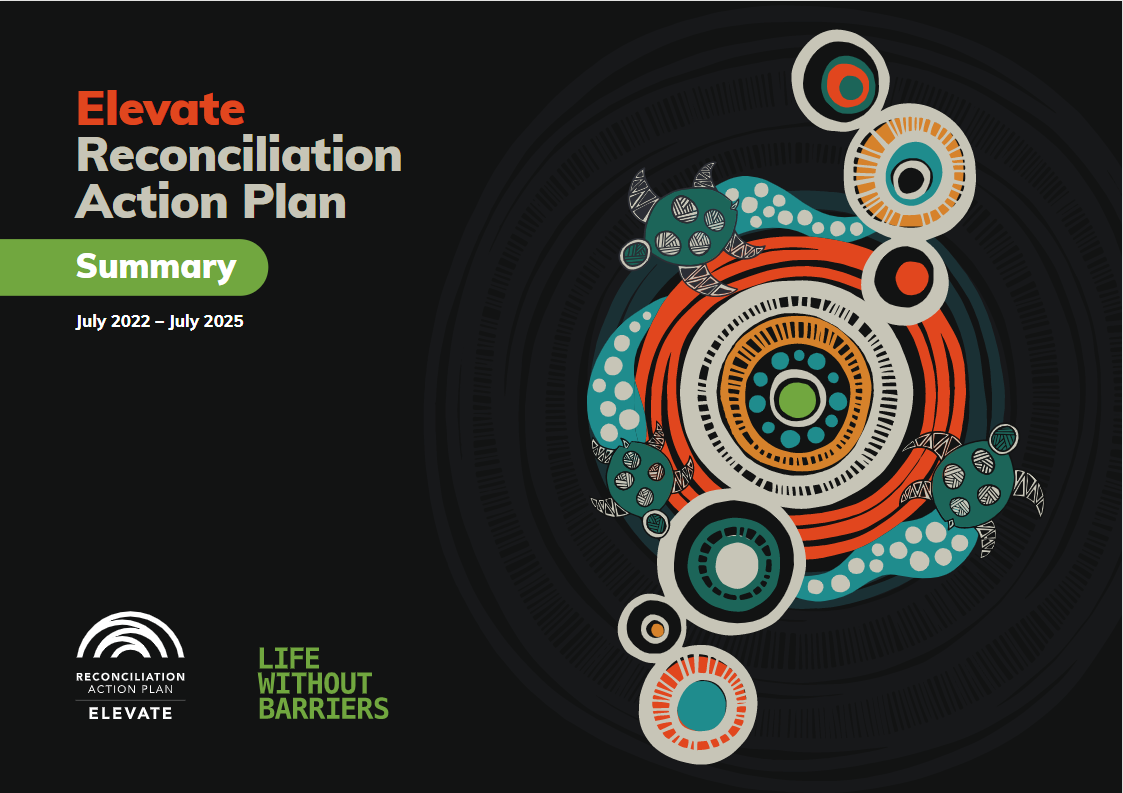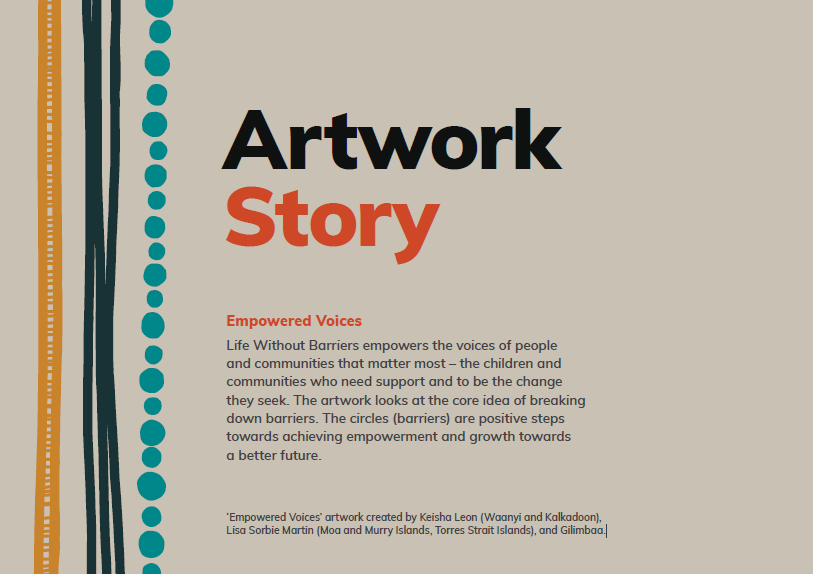Our commitment towards truth telling and Reconciliation
Life Without Barriers acknowledges Aboriginal and Torres Strait Islander peoples as the Traditional Owners and Custodians of this country and acknowledges their connection to land, water and community. We pay our respect to them, their cultures and customs and to their Elders past, present and emerging. We believe that Reconciliation must live in the hearts and minds of all Australians. We are committed to an ongoing journey towards Truth Telling, Self Determination and Reconciliation.
We recognise and value the contribution of Aboriginal and Torres Strait Islander employees, carers, people we support, partners and communities across Australia as we continue our Reconciliation journey together.
'Empowered Voices' artwork created by Keisha Leon (Waanyi and Kalkadoon), Lisa Sorbie Martin (Moa and Murry Islands, Torres Strait Islands), and Gilimbaa.

Life Without Barriers Elevate Reconciliation Action Plan
Life Without Barriers' commitments to Reconciliation are outlined in our Elevate Reconciliation Action Plan (RAP). The RAP includes our Transformation Project which is our commitment to progressively step away from providing out-of-home care to Aboriginal and Torres Strait Islander children over the next ten years by transitioning them into the more culturally safe and appropriate care of family, community and Aboriginal Community Controlled Organisations.
We support the Uluru Statement from the Heart
The Uluru Statement from the Heart is an invitation to all Australian’s, encouraging us to come together to support the establishment of a ‘First Nations Voice’ to be codified and enshrined in the Australian Constitution.
Life Without Barriers’ supports the Uluru Statement from the Heart in its entirety.
The primary source of law in Australia is the Constitution which currently does not recognise Aboriginal and Torres Strait Islander people as the first people of Australia. The Constitution was formed without any consultation or recognition of Aboriginal and Torres Strait Islander peoples.
Life Without Barriers supports the Constitutional recognition of Aboriginal and Torres Strait Islander people as described in the Uluru Statement from the Heart


